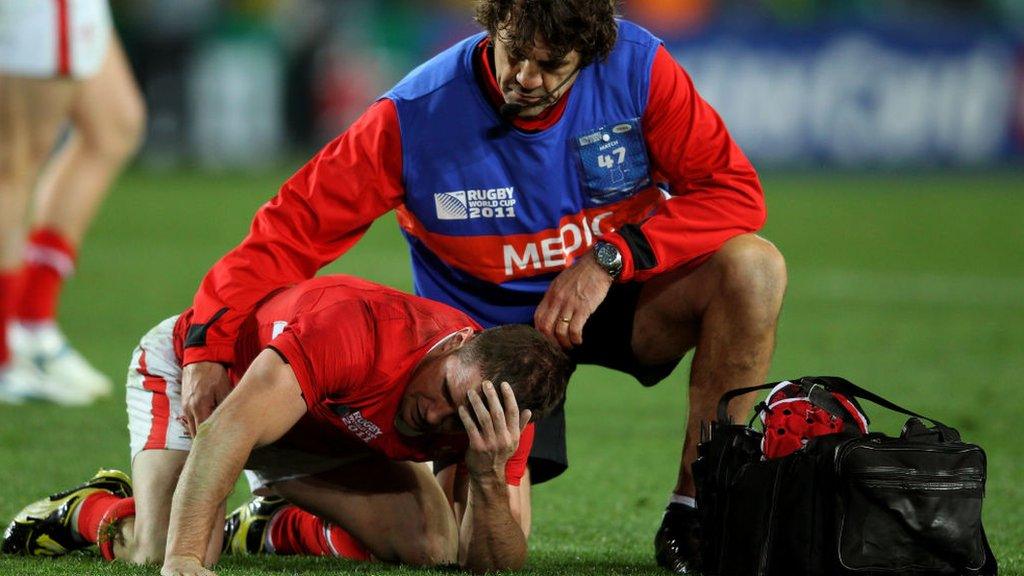Rugby's concussion problem tackled by smart mouthguards
- Published
Smart mouthguards are the latest innovation in smart sports technology
Modern contact sport often involves huge athletes crashing into each other at high speed - and that means more concussion and head trauma.
Rugby is just one of the sports that has had to front up to its head injury crisis.
The sport's governing bodies have been looking at everything from rule changes to medical protocols to improve safety, particularly as hundreds of former players go to court over management of brain injuries during their careers.
But perhaps the answer is not in procedure - maybe it's a bit of smart tech that goes in the player's mouth that can save the game.
Smart mouthguards are the latest innovation in smart sports technology. They aim to improve player welfare and provide a key to understanding the hidden damage of head trauma.
Thanks to research carried out at Ulster University, smart mouthguards are, for the first time, due to be incorporated in the head injury assessment protocols (HIA) at the elite level in time for the next Six Nations in February 2024.
How do they work?
The mouthguards are fitted with micro-sensors that measure the force and acceleration in the head when there is a collision.
The sensors also calculate the number of knocks a player experiences, as damage to the brain can also be caused by an accumulation of smaller impact events.
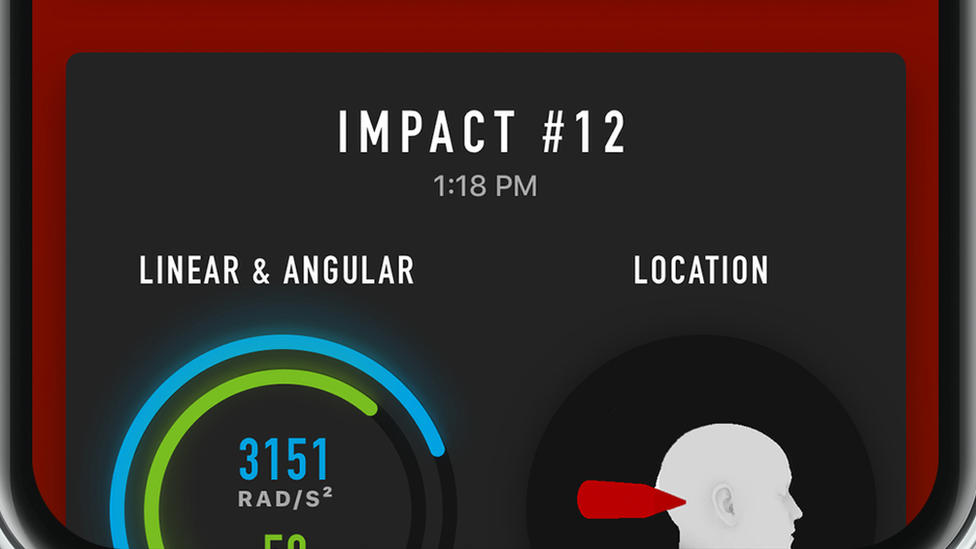
The digital mouthguard technology was developed by Prevent Biometrics
The data is then fed back to the medical team's computers on the touchline, where it can be assessed to determine whether a player should be called off for a head injury assessment (HIA).
The mouthguards have already been in use in the men's and women's Premiership in England.
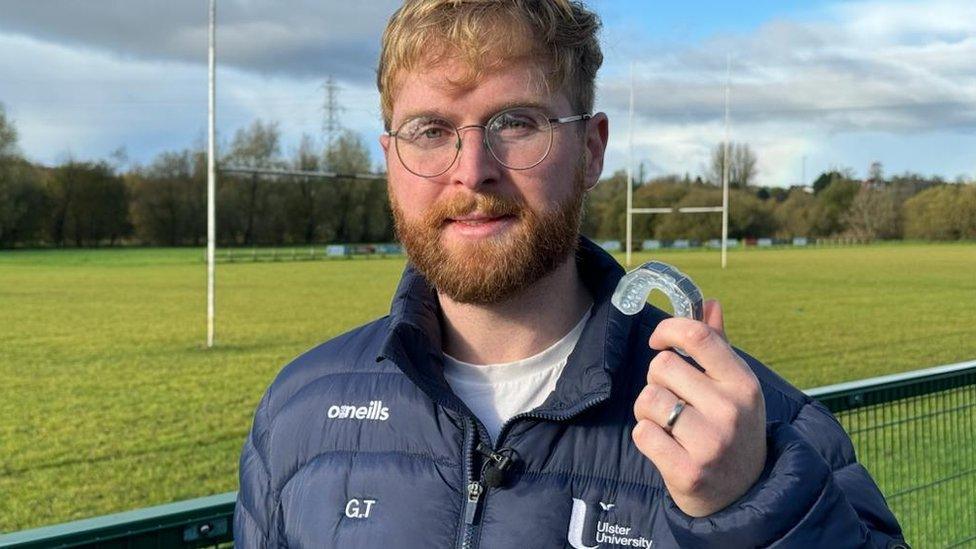
"We can investigate and try and understand what is that link between head impact severity and the injury risk" - Dr Gregory Tierney
Dr Gregory Tierney, lecturer in biomechanics at Ulster University, worked with World Rugby in reviewing the performance of the mouthguards to make sure they are accurate and reliable.
"We have been getting bucket loads of data from the men and women's rugby Premiership over in England. From that we can investigate and try to understand what is that link between head impact severity and the injury risk."
He said this work allowed the technology to be incorporated into the HIA protocol so "whenever a player's head impact goes over a certain threshold, they will be removed for an assessment".
"That is a really big advance moving forward in the sport," he added.
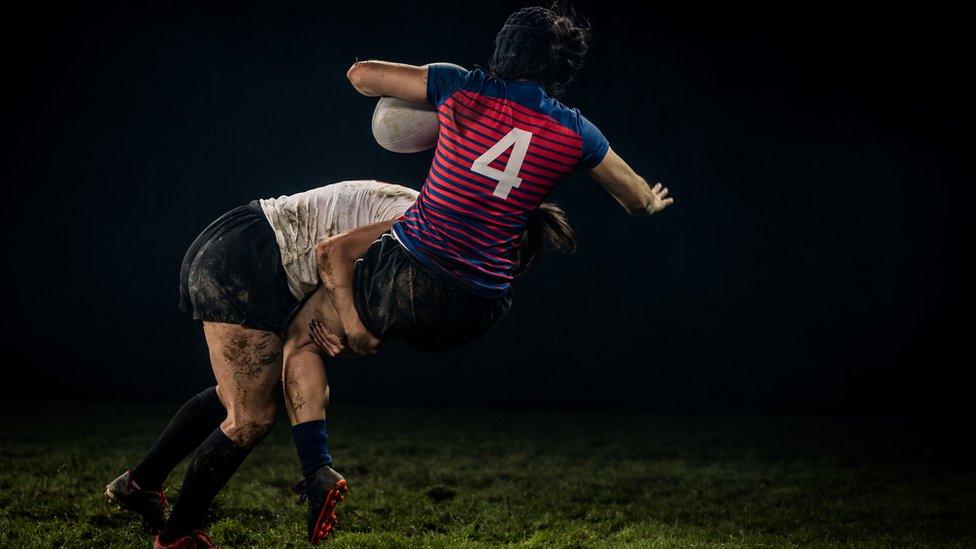
World Rugby has recommended that unions participate in an opt-in global trial of lowering the tackle height
The debate around damage to the brain in contact sports is gathering momentum.
There are growing concerns over rugby player welfare in regard to the hidden damage caused by head injuries and the lasting impact of repeated concussions.
Rugby's governing bodies in the UK are facing an increasing amount of legal claims with almost 300 ex-rugby players suing over brain injuries.
It is alleged the governing bodies failed to take adequate precautions to protect players from injury caused by repetitive knocks to the head.
While more research is required, studies have suggested rugby players with longer careers are more likely to develop degenerative brain diseases such as dementia, Parkinson's disease and motor neurone disease.
The hope is that this technology will increase player welfare and help in understanding the link between head impacts and brain damage.
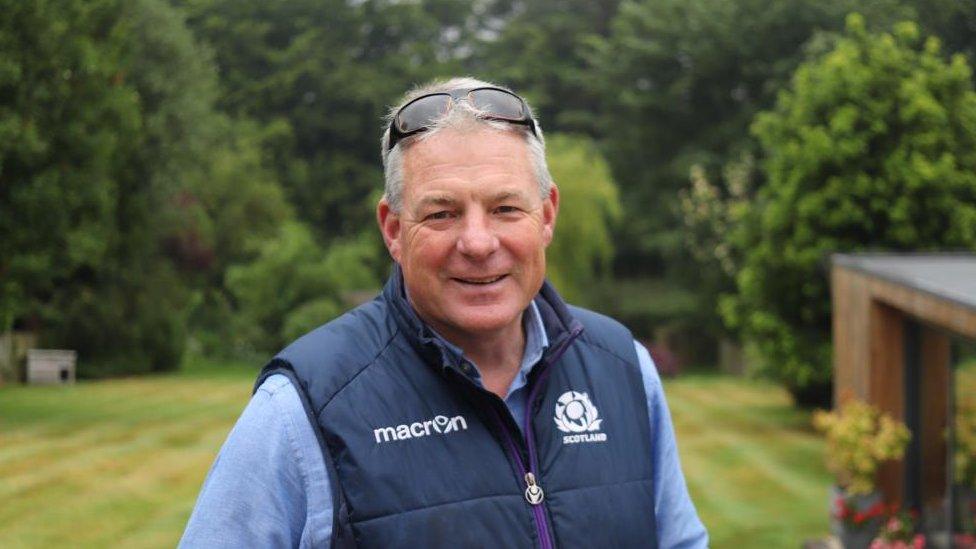
"We know that neurological diseases are prevalent. While more research is needed, it's still a rugby-wide problem" - Stewart Porter
'It's not addressing the problem'
Ex-Scotland and Ulster player Stewart Porter welcomed the implementation of this technology but said it's still not addressing the fundamental issue of heavy contact in a contact sport.
"I played with the likes of Doddy Weir. We all know what happened to Doddy, and similar players who have suffered.
"We know that neurological diseases are prevalent. While more research is needed, it's still a rugby-wide problem. This research will help us get to some kind of conclusion."
He added: "It creates a picture for parents, clubs and world rugby to make educated decisions.
"Make no mistake though, this is not going to eliminate head knocks.
"It's not addressing the problem. The problem is, it's a contact sport, and while that is the nature of the game, you have to make a judgment."
Grassroots
Dr Tierney hopes the technology will be used across all levels of rugby.
"We have been focusing on the elite level, however the hope is in the future these will be rolled out at a community level.
"There are plenty of other contact sports where this could be really useful for head impact exposure monitoring," he added.
Katie-Anne McCallion, a rugby coach at Belfast Met, said players at an amateur level should also benefit from smart mouthguards.
"From grassroots to professional levels, everyone is prone to a head injury. If they're seen to work they really should consider implementing them in grassroots rugby too," she said.
- Published31 August 2023
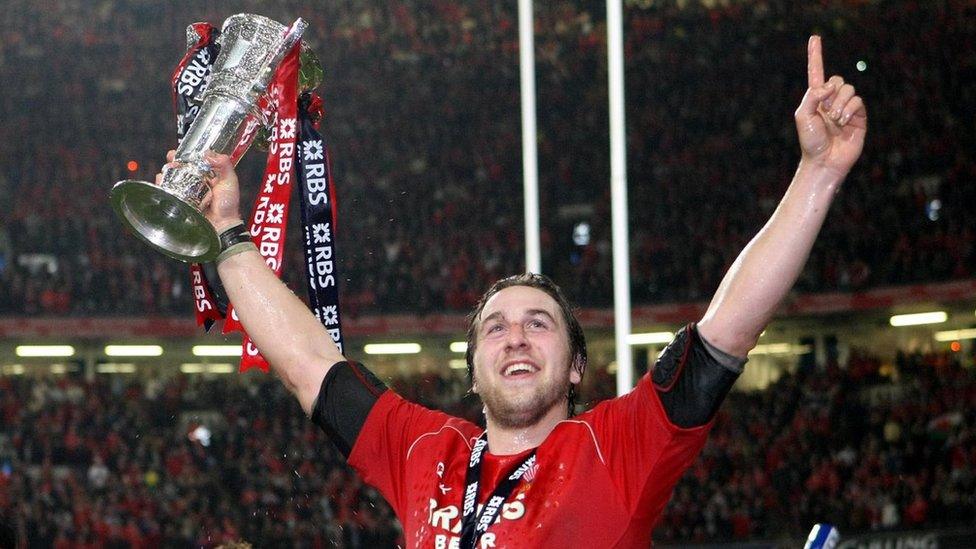
- Published28 April 2023
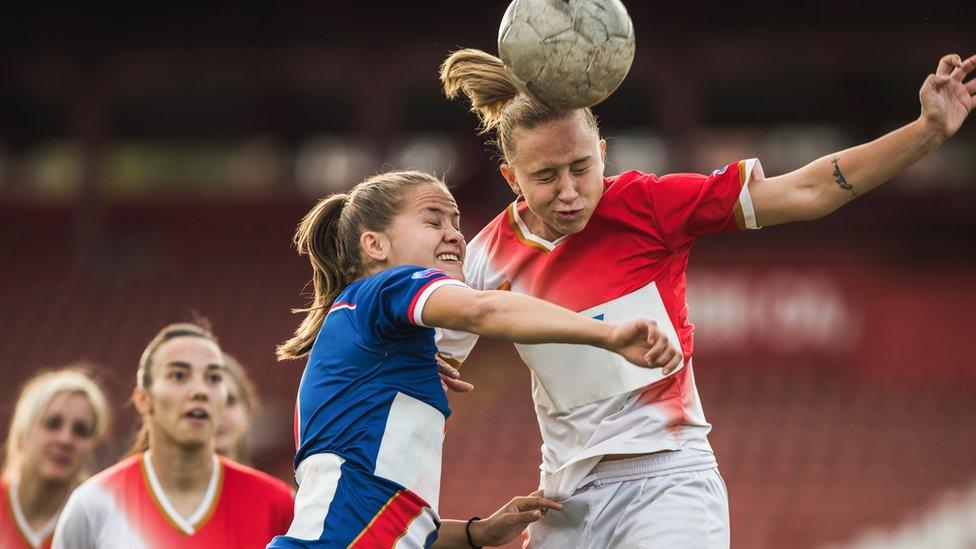
- Attribution
- Published31 August 2021
